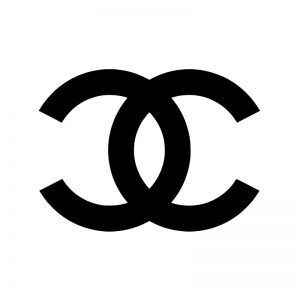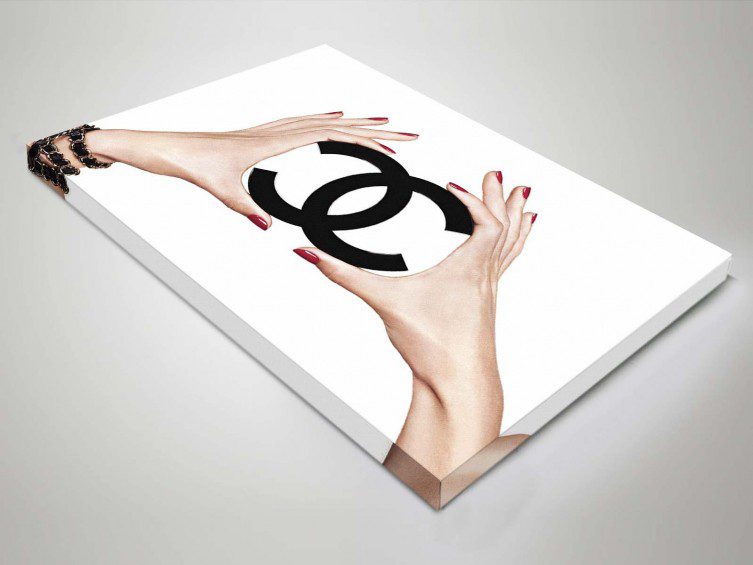Contents
Summary
Chanel is a luxury goods firm founded in 1910 by legendary French fashion designer- Gabrielle “Coco” Chanel- in Paris. Her simple elegant designs inspired by menswear and active wear rewrote the maxim of Fashion — particularly the skirt suit, the little black dress and iconic fragrance Chanel No. 5. Today Chanel is a privately held company owned by Alain and Gerard Wertheimer- grandchildren of Pierre Wertheimer- an early business partner of Coco Chanel.
History
Maison Chanel started out as a millinery shop in the North West of Paris before its famous headquarters on Rue Cambon was established in 1910. Though initially limited to millinery by the business lease.. the result of a pre-existing dressmaker’s shop at the same address as Chanel’s atelier and office.. she would soon expand with shops in Biarritz and Deaville, selling ready-to-wear as well as couture. There she pioneered a new look – one that was more relaxed and less opulent than the creations of the late nineteenth century catering to women with hourglass figures.
Per Vogue: “With a snip of her ribbon-looped scissors, Gabrielle Coco Chanel released women from corsets and put them in fluid jersey suits and loose chemise dresses…” Indeed, Chanel’s flannel blazers- straight-line linen skirts- sailor blouses and long jersey sweaters were revolutionary because they were worn by women who dressed for high society galas but also played sports. The ensuing decade saw Chanel’s brand become incredibly successful among European buyers.
In the 1920s- as fashion evolved- Chanel showed that she could keep up easily… embracing the gamine look and producing designs to boot – most famously the Chanel suit. Her wide-leg trousers, cardigan jackets, striped tops, turbans, turtlenecks, pea-coats, and, of course, the LBD were a rage. To complement her collections, Chanel expanded into fragrance.. commissioning Ernest Beaux for samples and partnering with venture capitalist Pierre Wertheimer to establish Parfums Chanel. The deal left Chanel with only 10 per cent of the profits from her international perfume sales: a contentious point that would sour her relationship with her business partner for decades.
After continued success and sartorial innovations in the Thirties.. Chanel shut shop during the second world war, when she moved into a suite at the Ritz on Place Vendôme with her boyfriend Hans Günther von Dincklage, a Nazi intelligence officer. Accused of collaboration with the enemy.. Chanel was eventually exonerated from trial and imprisonment after the French liberation of 1945 due to a lack of concrete evidence and thanks to a secret intervention from Winston Churchill. Nonetheless Chanel and von Dincklage sought exile in Switzerland where they remained for eight years and used the Chanel name to set up an independent parfumerie.
“In the world of perfumery Chanel has a special history. We know exactly how to source every ingredient for every formula. We created and own all our formulas, which allowed us to work on each of the ingredients that compose them. For example, I was able to meet a jasmine producer in Egypt who remembered my father’s visit 40 years earlier and also this citrus producer who had already worked with Henri Robert- my father’s predecessor. This is how we have worked on our supply chains over time and how we have developed the qualities of our own raw materials which contribute to the expression of a unique identity.” Olivier Polge, Chanel In-House Perfumer-Creator.
Wertheimer saw his business interests threatened and reached a settlement with Chanel. She returned to France in 1953, adapting her designs to the hugely successful ‘new look’ ushered in by Christian Dior in the post-war years and even venturing successfully into men’s perfumes. Per Vogue “Cecil Beaton observed the key to Chanel’s success in his 1954 book: ‘The Glass of Fashion: “It is the genius who creates the need, though that need must reflect the unconscious wishes of the moment if that genius is to be accepted.”
Chanel continued to design until her death in 1971. Following a period of a downturn after her death.. Alain Wertheimer enlisted German designer Karl Lagerfeld to revive the brand in the 1983. Per Vogue: “In the three decades since, he has manipulated and modernised the classic Chanel suit and many, many more of the brand;s éléments éternels from the quilted bag, pearls, gold chains and buttons to the camellia motif, black bows and two-tone shoes…. Lagerfeld has from the start taken Coco’s sacred codes and subverted them…. as he borrows from pop culture and injects a soupçon of biting wit.”
In 2018, the headquarters were relocated to London and the luxury French fashion brand announced that fur and exotic skins would no longer be used in their collections, making it the latest high-end label to shun animal pelts in its designs. After Lagerfeld’s death the position of Creative Director went to longtime collaborator Virginie Viard, who had been working for the house for 30 years.
The maison continues to rule the luxury fashion space. Vogue praised Chanel Haute Couture 2023: “Viard’s approach is Chanel as lifestyle. Sans high-flown concepts, jokes or theatrical gimmick her focus is on capturing the essence of Frenchness. Sophistication and simplicity, permanence and beauty … She went about portraying it down to faithfully reflecting the inimitable French beauty standard: perfect-not-perfect…”
Vision
Chanel’s brand vision is rooted in the spirit of innovation and liberation. From its humble beginnings as a millinery shop in Paris.. Gabrielle Coco Chanel sought to redefine women’s fashion by breaking away from the constraints of the late nineteenth-century styles. She introduced a more relaxed and less opulent look that liberated women from corsets and offered them fluid jersey suits and chemise dresses.
Chanel’s designs were not just fashion statements but a reflection of the changing role of women in society. Her revolutionary pieces- flannel blazers, sailor blouses and wide-leg trousers- were not only worn by high-society women but also by those engaged in sports, marking a shift in the perception of women’s fashion. As the brand evolved into the Twenties, Chanel continued to keep pace with the changing fashion landscape. She embraced the gamine look and introduced designs like the skirt suit, wide-leg pants, cardigan jackets and the little black dress. Despite challenges including a contentious business partnership, Chanel’s commitment to quality and innovation remained unwavering.
The luxury fashion brand’s enduring legacy extends beyond fashion and fragrance; it represents its founder’s vision: a spirit of independence and resilience. Even during the tumultuous years of World War II Chanel’s story took unexpected turns but her brand’s allure endured. Today Chanel remains a symbol of sophistication and Frenchness embodying a vision that transcends fashion and captures the essence of timeless beauty and style.
Mission
Chanel’s mission statement: “To be the Ultimate House of Luxury defining style and creating desire- now and forever.”
The Team
Leena Nair (Global CEO)
Virginie Viard (Creative Director)
Philippe Blondiaux (Chief Financial Officer)
Olivier Polge (Master Perfumer)
Products and Services
French luxury goods firm Chanel is renowned worldwide for its haute couture- ready to wear- fashion accessories- footwear- fragrance- eye wear- jewellery- watches and cosmetics.
Awards and Services
The two most illustrious awards won by fashion brand Chanel are the 2015 British Fashion Awards for Outstanding Achievement (Karl Lagerfeld) and the 1957 Neiman Marcus Fashion Award (Coco Chanel). Coco Chanel was also the first person in history to win the FiFi award in all countries in a single year for a fragrance.
References
- Official website Chanel
- Chanel Spring Summer 2023 Vogue
- Chanel Becomes the Latest in Luxury Fashion to Ban Fur and Exotic Animal Skins Time
- Vogue profiles Chanel Vogue
- Profile of Coco Chanel FashionABC
- Chanel Brings Senegal’s Textile Artistry to Paris WWD
- Instagram account of Chanel Instagram
- Step inside Chanel’s couture atelier WWD
- Twitter account of Chanel Twitter
- Chanel Aims to Merge Luxury and Sustainability With Its Newest Beauty Line Pop Sugar
- Facebook account t of Chanel Facebook
- Fashion, Finance And Coco Chanel Forbes
- LinkedIn account of Chanel LinkedIn
- Chanel Celebrates Its World Of Perfumes And High Jewelry In Paris Forbes
- Wiki page of Chanel Wikipedia
- Chanel to showcase Cruise 2024 collection in Shenzhen Fashion United
- Book: Coco Chanel and The Nazi Party The New Yorker
- Elle Fanning Shines in Sequinned Monochromatic Look at Chanel Resort 2024 Show WWD
- The House That Coco Built The New York Times
- Fondation CHANEL and UN Women partner to accelerate women’s economic empowerment UN Women





